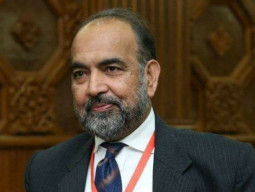
To truly understand this trend though would require a quick crash course in Western monetary policy over the last decade. When the global financial system went belly up in 2007, central banks unleashed a flood of freshly printed money to stimulate the economy. Trillions of dollars were distributed to major banks as part of quantitative easing (QE) programmes. The theory was that the banks would lend this money out to businesses in an effort to create real wealth and guarantee national prosperity.
Instead the banks promptly put this money to work in the stock markets. Stock prices hit record highs across the world even as globally growth slumped, small businesses shut down in record numbers, and labour markets suffered some of their worst contractions in a century. It was trickle-down economics all over again. Only recently the media has begun to wake up to the fact that no one really knows if this stimulus worked. Moreover, they’re realising that this programme has considerably worsened the rich-poor gap by indirectly enriching the 1% at the expense of the rest.
Andrew Huszar, a former Federal Reserve official, confessed in The Wall Street Journal a few years ago: “I can only say: I’m sorry, America…The central bank continues to spin QE as a tool for helping Main Street. But I’ve come to recognise the programme for what it really is: the greatest backdoor Wall Street bailout of all time.”
An oversupply of money tends to fundamentally distort markets, creates bubbles in domains such as real estate and technology, and triggers inflation. Generally when central banks try such questionable experiments, sensible investors rush for predictable safe havens, such as precious metals, to protect their wealth. Gold prices indeed soared for a bit in the early years after the recession but have held remarkably steady since (in the $1,000-2,000 range), and in no way comparable to Bitcoin’s dramatic rise. However, watchdog bodies (such as the Gold Anti-Trust Action Committee) believe that gold prices have been consistently suppressed by big banks for the past several years, a view supported by research studies. Regulators have also investigated several big banks for price-fixing precious metals and penalised Barclays and Deutsche Bank with hefty fines.
In this case investors would turn to the next safe haven on the list: government bonds. The logic of bonds is that they’re typically not risky and yield interest payments over time. But lately central banks have slashed interest rates on bonds to below zero, thereby ensuring that buyers lose money in the long run. Over 9 trillion dollars worth of bonds, including those of Europe and Japan, now have “negative yield”. As per the Financial Times, this is “uncharted territory” for markets. It is unprecedented. Who would want to put their money in an enterprise guaranteed to lose?
Given this background, we’re now in a position to understand the appeal of Bitcoin. By bringing together advances in cryptography and distributed computing, Bitcoin shows that it is possible to manage money without the middleman. This is Bitcoin’s fundamental innovation: it cuts bankers out of the equation entirely. This is the Bitcoin manifesto in a nutshell. As Bitcoin creator Satoshi Nakamoto wrote almost a decade ago:
“The root problem with conventional currency is all the trust that’s required to make it work. The central bank must be trusted not to debase the currency, but the history of fiat currencies is full of breaches of that trust. Banks must be trusted to hold our money and transfer it electronically, but they lend it out in waves of credit bubbles with barely a fraction in reserve. We have to trust them with our privacy, trust them not to let identity thieves drain our accounts.”
Bitcoin therefore inspires a confidence that traditional safe havens do not. The common argument that Bitcoin is a bubble is only half true. Yes, there are lots of hedge funds now trying to ride the Bitcoin wave, but it is central banks and their antics that have driven, nay forced, investors into this market. The popularity of Bitcoin is a scathing indictment of central banks and their totalitarian policies over the last decade. This is perfectly rational behaviour. As Bloomberg writes when reporting on the Bitcoin craze in Latin America, “The cryptocurrency craze suddenly doesn’t seem so crazy in countries that know a thing or two about hyperinflation.” Bitcoin has become the new gold.
This is, however, in no way an endorsement to rush and buy Bitcoin. Any number of things could happen soon enough to suck the air out of Bitcoin. For instance, China and Russia are setting up a gold trading market, which is expected to restore credibility to gold prices. Plus a Bitcoin futures market has just been launched which — like any futures market — theoretically also opens up the possibility of manipulating Bitcoin prices. Furthermore, the fundamental technology underlying Bitcoin has systemic issues: Bitcoin mining has an unsustainable carbon footprint and the network has serious scalability problems. The future is really up in the air. It is still too early to sell one’s house and invest it all in Bitcoin.
Published in The Express Tribune, January 20th, 2018.
Like Opinion & Editorial on Facebook, follow @ETOpEd on Twitter to receive all updates on all our daily pieces.

























1714131462-0/WhatsApp-Image-2024-04-26-at-4-21-45-PM-(1)1714131462-0-270x192.webp)



1714129906-0/Clint-Eastwood-(1)1714129906-0-270x192.webp)








1714024018-0/ModiLara-(1)1714024018-0-270x192.webp)









COMMENTS (1)
Comments are moderated and generally will be posted if they are on-topic and not abusive.
For more information, please see our Comments FAQ